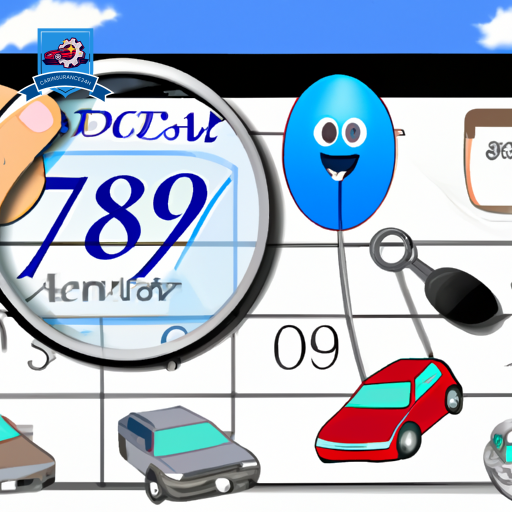Facing premium increases at insurance renewal can be a significant concern for policyholders, prompting the need for a strategic approach to manage costs effectively. Understanding the factors that contribute to premium hikes is the first step in addressing this challenge.
From there, reviewing your current policy details, comparing rates from different insurers, and considering adjustments such as raising deductibles or bundling policies can offer pathways to more favorable terms. Furthermore, improving one’s risk profile and inquiring about available discounts may open up additional savings.
As we explore these strategies further, the question remains: how can policyholders negotiate with insurers to mitigate the impact of premium increases?
Understanding Premium Increases

Premium increases, often a source of frustration for policyholders, can occur due to a variety of factors that necessitate a deeper understanding of the insurance market dynamics. Among the primary drivers, rate justification and inflation impact stand out as critical elements that influence the recalibration of premiums at the time of insurance renewal.
Rate justification refers to the process insurance companies undergo to validate the adjustment of premium rates. This is typically a thorough procedure that involves a detailed analysis of risk factors, historical claims data, and market trends. Insurance providers must substantiate the necessity for rate adjustments, ensuring that the recalculated premiums are in line with the evolving risk landscape and cost of providing coverage. This process is important for maintaining a balance between competitive pricing and the financial sustainability of the insurance fund.
Inflation impact, on the other hand, reflects the broader economic conditions affecting the insurance sector. The cost of claims tends to rise with inflation, as the expenses related to healthcare, repairs, and replacements for insured assets increase. This inflationary pressure necessitates an upward adjustment in premium rates to cover the rising costs. The influence of inflation on insurance premiums is a direct response to maintaining the insurer’s ability to fulfill its financial obligations towards policyholders in the face of escalating costs.
Understanding these factors provides a clearer perspective on why premiums might increase at renewal. Recognizing the complexities behind rate justification and the inflation impact helps demystify premium adjustments, allowing policyholders to approach renewal discussions with a more informed viewpoint.
Review Your Current Policy

Before considering renewal, it is essential to thoroughly evaluate your current insurance policy to understand the coverage, benefits, and any limitations that may influence your decision. The process of reviewing your existing policy requires a methodical approach to ensure that you have a comprehensive understanding of what your policy entails, which will in turn aid in making an informed decision about whether or not to renew under the same terms.
To start, examine the specifics of your coverage. This includes identifying the scope of what is protected against, the extent of coverage offered, and any notable inclusions that add value to your policy. Understanding these aspects is vital because they form the foundation of the protection you are paying for. It is also important to consider any changes in your circumstances since the policy inception that might affect your current and future coverage needs.
Next, focus on policy exclusions. These are conditions or situations that your insurance does not cover. Being aware of these exclusions is vital because they outline the limitations of your policy. Ignorance of these can lead to unexpected out-of-pocket expenses in the event of a claim.
Speaking of claims, reviewing your claim history is another critical step in this process. Analyze any claims you have made in the past, how they were handled, and the outcomes. This reflection can provide insights into the service quality of your insurer and whether your current policy has met your expectations.
Compare Other Insurers

Having reviewed your current insurance policy for its benefits and limitations, it becomes essential to explore the market and compare offerings from other insurers to make sure you are receiving the best value for your premium. This process, while potentially time-consuming, can be greatly streamlined and made more effective by employing a structured approach and leveraging modern digital tools.
-
Use Comparison Websites: Digital tools have revolutionized how we can compare insurance products. Utilize reputable insurance comparison websites to get an overview of the premiums, coverages, and customer service ratings of different insurers. These platforms aggregate data in real-time, reflecting the latest market trends and offerings.
-
Evaluate Coverage Options: Not all insurance policies are created equal. Look beyond the price and assess the coverage details. What might appear as a saving on the premium could end up costing more in the long run if the coverage is insufficient for your needs.
-
Consider Customer Service Ratings: The quality of customer service is important, especially when filing claims. Review customer feedback and ratings for insight into how insurers handle claims and customer inquiries.
-
Stay Informed on Market Trends: The insurance market is dynamic, with premiums fluctuating based on a variety of factors, including economic conditions and regulatory changes. Staying informed on these trends can help you anticipate changes in premiums and coverage options, ensuring that you are always getting the best value for your money.
Raise Your Deductible

One effective strategy to manage insurance costs is to contemplate raising your deductible, which can lead to lower premium rates. By increasing the amount you’re willing to pay out of pocket before your insurance policy kicks in, insurers are less at risk and often willing to lower your premiums. This approach, however, requires a detailed risk assessment to make certain it aligns with your financial situation and tolerance for risk.
Raising your deductible can be particularly beneficial if you have a good record of infrequent claims and possess the financial stability to cover higher out-of-pocket costs in the event of a claim. It’s a balancing act between immediate deductible savings and the potential future costs.
To illustrate, consider the following table which outlines hypothetical scenarios of deductible adjustments and the impact on premium savings:
| Deductible Increase | Estimated Annual Premium Savings |
|---|---|
| $500 to $1,000 | $100 |
| $1,000 to $2,000 | $200 |
| $2,000 to $5,000 | $350 |
| $5,000 to $10,000 | $500 |
This table exemplifies how deductible adjustments can affect your insurance premiums. A careful risk assessment is imperative to weigh the potential deductible savings against the risk of having to cover a larger portion of any future claims.
Bundle Your Policies

One effective strategy to manage insurance renewal premium increases is to contemplate bundling multiple policies with the same provider. This approach not only simplifies the management of your insurance portfolio but also has the potential to reveal significant savings.
In the following sections, we will explore the benefits of policy bundling, how to compare bundled savings effectively, and strategies to maximize bundle discounts.
Benefits of Policy Bundling
Bundling multiple insurance policies with the same provider can lead to significant cost savings and streamline the management of one’s personal insurance portfolio. This strategy not only simplifies the insurance process but also fosters customer loyalty and opens up cross-selling opportunities for insurers. The benefits of policy bundling extend beyond mere convenience:
-
Enhanced Savings: By consolidating policies, customers often receive discounts that are not available when policies are purchased separately.
-
Simplified Management: Managing one account with multiple policies is considerably less complex than handling multiple accounts.
-
Personalized Service: Bundling encourages providers to offer more personalized service due to a deeper understanding of the customer’s overall needs.
-
Increased Loyalty Rewards: Insurers may offer additional perks or loyalty rewards to customers who choose to bundle their policies, further enhancing value.
Comparing Bundled Savings
When evaluating the financial benefits of combining multiple insurance policies, it’s essential to compare the potential savings offered by bundling. This comparison should not only focus on the immediate reduction in premiums but also consider the long-term advantages such as flexibility perks and loyalty rewards.
Flexibility perks refer to the ease of managing multiple policies under one provider, potentially allowing for more tailored coverage adjustments and easier policy oversight.
Loyalty rewards, on the other hand, often manifest as additional discounts or benefits that accrue over time, rewarding customers for their continued patronage.
These factors contribute greatly to the overall value proposition of bundling policies, making it important for policyholders to closely examine and compare these offerings when considering their insurance renewal options.
Maximizing Bundle Discounts
Having explored the benefits of comparing bundled savings, it’s important to focus on strategies for maximizing bundle discounts to further reduce insurance premiums. Implementing the right strategies can make a significant difference in how much you save annually.
Consider these steps:
-
Enroll in Loyalty Programs: Many insurers offer additional discounts to customers who demonstrate long-term loyalty. These programs often provide incremental savings over time.
-
Combine as Many Policies as Possible: Bundling home, auto, and life insurance can maximize savings compared to holding policies with different providers.
-
Review Payment Plans: Some insurers offer discounts for paying premiums annually or setting up automatic payments, reducing administrative costs.
-
Regularly Review and Adjust Coverage: As your needs change, periodically reviewing your policies can make sure you’re not overpaying for unnecessary coverage.
Improve Your Risk Profile

Improving your risk profile can greatly influence your insurance premium costs in a positive way. Insurers assess risk to determine premiums, so demonstrating that you’re a lower risk can lead to lower costs. Two effective strategies for enhancing your risk profile include completing safety courses and focusing on credit improvement.
Safety courses are a proactive way to reduce your perceived risk, especially for auto and home insurance policies. For auto insurance, completing a defensive driving course can show insurers that you’re committed to safe driving, potentially leading to lower premiums. Similarly, for homeowners, taking courses in fire safety or disaster preparedness can demonstrate a reduced risk of claims, which insurers may reward with lower rates.
Credit improvement is another critical area impacting your risk profile. Insurers often use credit scores as part of their risk evaluation process. A higher credit score can be indicative of responsible financial behavior, which insurers equate with lower risk. Initiatives to improve your credit score, such as paying bills on time, reducing debt, and correcting errors on your credit report, can make a significant difference in how insurers view your risk level.
Ask About Discounts

One effective strategy for managing insurance renewal premium increases is to inquire about available discounts with your insurer. This approach not only helps in potentially lowering your premium but also in understanding the value-added services your insurance company offers. Insurance companies often provide a variety of discounts that policyholders might not be aware of. Hence, it is important to actively engage with your insurer to uncover these opportunities.
When asking about discounts, consider the following areas where you might be eligible:
-
Loyalty Rewards: Many insurers offer discounts to their long-term customers as a token of appreciation for their continued business. This loyalty reward can sometimes be substantial, depending on how long you’ve been with the insurer.
-
Payment Plan Options: Opting for a more manageable payment plan, such as annual instead of monthly payments, can sometimes lead to discounts. Insurers prefer the certainty of receiving a lump sum and might offer you a reduced rate for choosing this option.
-
Bundling Policies: If you have multiple insurance policies, such as home and auto, bundling these with the same insurer can often lead to discounts. Insurers value the additional business and are usually willing to offer competitive rates.
-
Safety Features and Programs: Insurers often provide discounts for implementing safety features in your property or vehicle. Additionally, participating in defensive driving courses or home safety programs can make you eligible for discounts.
Engaging in a conversation about discounts can reveal opportunities to mitigate premium increases and ensure that you’re getting the most value from your insurance policy.
Consider Coverage Adjustments

Evaluating your current insurance coverage allows for strategic adjustments that can effectively reduce your renewal premium without compromising essential protection. This process involves a thorough review of your existing policy to identify areas where coverage may be adjusted to better align with your current needs and risk profile. By examining coverage options and understanding the implications of policy exclusions, policyholders can make informed decisions that optimize coverage and cost.
One approach to contemplate is the adjustment of deductibles. Increasing your deductible can lower your premium, but it’s important to make sure that the new deductible is financially manageable in the event of a claim. Additionally, evaluating the necessity of certain add-ons or riders that may no longer be relevant to your situation can lead to cost savings. It’s important to weigh the benefits of these coverage options against their cost to determine if they are still valuable to you.
Policy exclusions also play a significant role in coverage adjustments. Understanding what your policy does not cover can highlight areas where you might be over-insured or where additional coverage may be unnecessary. For instance, if your policy includes coverage for risks that are highly unlikely given your current circumstances, discussing these exclusions with your insurer can lead to premium reductions.
Negotiate With Your Insurer

After considering adjustments to your coverage, engaging in negotiations with your insurer represents a proactive step towards managing renewal premium increases effectively. The negotiation process can be a strategic opportunity to leverage your history with the company, explore loyalty rewards, and discuss policy customization options that better align with your current needs. Approaching these discussions with a clear understanding of your policy and the value you bring as a long-term customer can lead to beneficial adjustments.
When preparing to negotiate with your insurer, consider the following steps:
- Review Your Policy: Understand the specifics of your current coverage. Identify any changes in your situation that may warrant adjustments, and be ready to discuss these with your insurer.
- Research Market Rates: Gain insight into what other insurers are offering for similar coverage. This knowledge equips you with a benchmark to discuss potential rate adjustments or improvements to your policy.
- Highlight Loyalty and History: If you have been with your insurer for several years without significant claims, highlight this history. Loyalty rewards or discounts may be available but not automatically applied to your policy.
- Request Policy Customization: Discuss options for customizing your policy to fit your current needs more closely. This could involve adjusting deductibles, coverage limits, or adding specific riders that could ultimately lead to cost savings.
Negotiating with your insurer requires a blend of preparation, understanding, and clear communication. By addressing these aspects, policyholders can navigate renewal discussions more effectively, potentially securing better rates or enhanced coverage that reflects their current needs.
Frequently Asked Questions
How Do Changes in Government Policy or Regulations Affect My Insurance Premium at Renewal?
Changes in government policy or regulations can directly impact insurance premiums due to shifts in policy interpretation and regulatory compliance requirements. These factors necessitate adjustments in risk assessment, potentially leading to premium adjustments at renewal.
Can Filing a Non-Claim Incident Report Impact My Insurance Premium Renewal Rates?
Filing a non-claim incident report can affect renewal rates by influencing your driving history, potentially leading to a reassessment of policy discounts. Insurers may view such reports as indicators of future risk.
What Role Does Inflation Play in the Annual Increase of Insurance Premiums?
As the saying goes, ‘A stitch in time saves nine,’ understanding the role of inflation in insurance premium hikes is pivotal. Inflation acts as a key cost driver, with global events exacerbating its impact on rates.
How Does the Insurance Company’s Financial Health Affect Premium Prices at Renewal?
The financial health of an insurance company, influenced by investment performance and risk assessment, greatly impacts premium prices at renewal. Strong financial standings allow for competitive pricing, while weaker positions may necessitate higher premiums.
Are There Any Specific Times of Year or Market Conditions That Make It More Advantageous to Renew or Shop for New Insurance Policies?
Yes, seasonal trends and consumer behavior greatly impact the best times to renew or shop for new insurance policies. Early in the year, when companies reassess their portfolios, can offer advantageous conditions for consumers.










